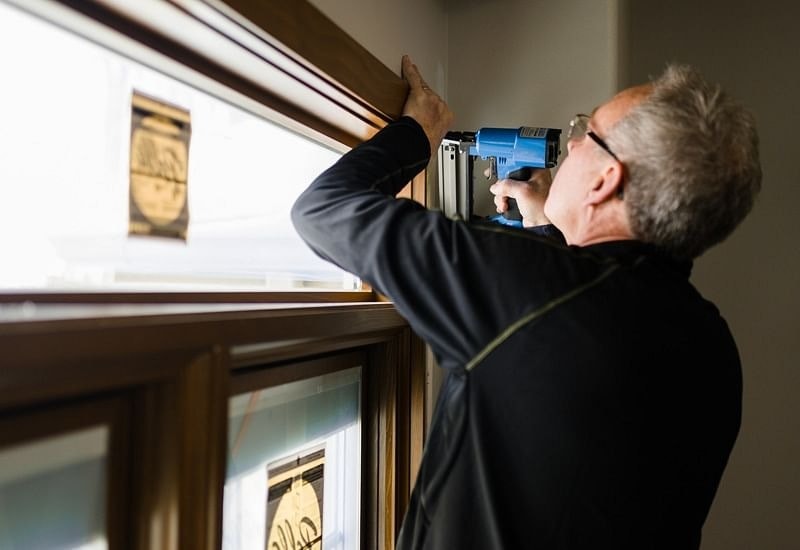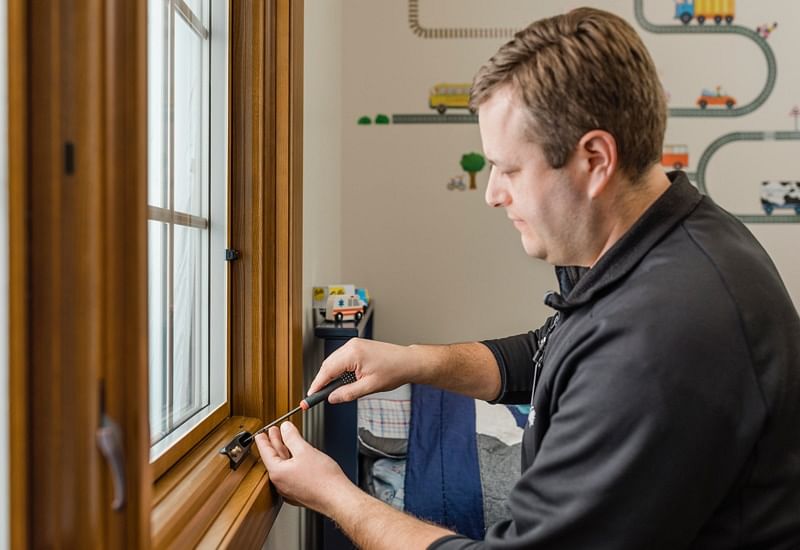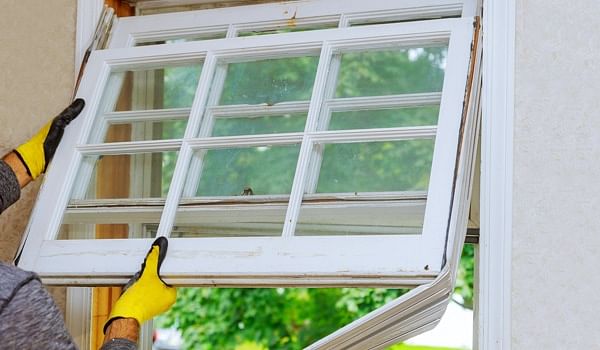When to Repair & When to Replace Home Windows
Posted
on September 10, 2020

As a homeowner, you face the repair or replace question often. Things break down due to general wear or suffer damage that demands a faster fix. And with multiple windows throughout your home, there’s a higher probability that a problem will pop up and leave you searching for answers.
So what should you do when facing issues with your home’s windows?
It depends on the specifics of your home and the repair job at hand. There are some problems you can fix with a little elbow grease and some that you can only resolve through window replacement.
Common Window Problems That Can Be Repaired
There are a variety of problems that could occur with your windows. The first step to deciding between window repair and window replacement is to determine the issue. Once you know what you’re in for, you can figure out whether it’s something you can fix yourself.
Broken Window Panes
Broken glass is easy enough to diagnose. And it’s probably something you won’t want to wait too long to fix.
Broken panes pose a potential safety concern to you and your family. They can let your interior heating and cooling out or allow the outdoor elements to seep in. During stretches of extreme heat or freezing temps, a broken window can increase your energy costs while decreasing your comfort.
Even if it’s a small crack or break, the whole pane may need to be replaced. That might be a weekend project you can handle. But depending on how the window was glazed, it could call for a lot more work. You may need to replace the entire sash or look into replacing the whole unit instead.
Windows That Won’t Open
A sticking sash or creaking crank often has a straightforward solution: clean your window. Dirt and grime can accumulate if you or the previous homeowner neglected window maintenance responsibilities. Returning to your routine maintenance may resolve the issue. If locks, hardware and other parts are broken or still impeding the function of your window, installing replacement parts may be the solution.

Drafty Windows
A broken pane could be a reason for a draft or leak in your window. There are a variety of other potential causes too:
- Weatherstripping may not seal as well as a newly-installed window.
- Caulking around the window can crack or peel.
- Gaps can form in between the frame and the sash due to your home settling or window materials breaking down over time.
Caulk and weather stripping are inexpensive items you can pick up at the hardware store and fix yourself. A sash that is warped, damaged or no longer fits properly can be replaced. To start, check if the window is plumb, level and square by using a level and a tape measure. You may find that the whole window unit was installed incorrectly or shifted as your home settled. In that case, it needs to be replaced or reinstalled.
Water Coming Through the Window
If a draft can get in, water probably can too. If you see signs of water infiltration in your home, you need to quickly determine the problem with the window and the source of water outside it.
When water’s getting inside, it may be coming in somewhere around the window. That might mean the exterior window casing is faulty. Or it could mean you just need to clean your gutters. Once you find where it’s coming in and why, you can make those exterior fixes.
If water proves to be coming through the window itself or you’ve noticed signs of water damage — cracking, peeling and warping — you need to find out why. Inspect the window just like you’re looking for a draft. It could be a simple fix like adding some new weather stripping. Or it could be a major functional issue and you need to replace the window.
Foggy Windows
When your windows are all fogged up, it’s usually just window condensation. And that’s something you can typically reduce or completely get rid of yourself. It’s also something you will want to do because any moisture on your windows can lead to damage over time.
First, check to see where the window condensation is coming from: inside, outside or in between two panes of glass. The fix depends on the location:
- Inside – Interior window condensation is a humidity issue. Get the air circulating inside your home, open up your window treatments or take other steps to improve interior window condensation.
- Outside – This is the work of nature and doesn’t indicate any problems. You can try spraying some water repellant on your windows if it’s bothersome.
- In Between – Moisture between pieces of insulated glass is a sign of a glass seal failure. You should consult a window professional to see if the panes can be replaced or if you need a whole new window.

How to Make the Window Repair vs. Replacement Decision
Each window problem has a different set of solutions. And there are a variety of factors that affect your decision. Each of them should be considered on a case-by-case basis. Given the same problem on two different windows, you may reach a different decision. Think outside the basic window repair or replacement costs and consider these three factors:
Labor Cost to Repair Windows
The cost of your time is a cost to consider. Sometimes repairing and maintaining old windows can be more trouble than proceeding with replacement windows. There’s always the extra hassle of upkeep that comes with old, worn products. You may need to constantly fix jammed windows, repaint them to improve their appearance, search for rare or discontinued spare parts or clean all the nooks and crannies of outdated designs. If you find yourself spending a great deal of time and effort on your windows, replacement may be the less labor-intensive option.
Window Performance
Energy efficiency and comfort are two things most homeowners value highly. Performance can decrease as windows age, causing drops in these two areas. If you find your heating or cooling bills higher than they should be and drafty, old windows are a culprit, it might be time to replace them.
Upgrading to energy-efficient windows can lead to significant energy savings. On a typical home, replacing single-pane windows with ENERGY STAR® certified windows can save, on average, $101 to $583 a year on heating and cooling costs.1
Window Aesthetics
When it comes to your home, looks are always a factor. Properly maintained windows can last for years, keeping up both their performance and appearance. And you may be reluctant to replace windows, fearing that you’ll lose the charm or historic look.
New windows provide an opportunity to enhance your home by flashing your style, adding architectural interest, letting in more light or framing the scenery outside. You can find new windows that stick to the architectural elements of your home or update to a style all your own.
Whatever problem your window is facing, it’s always a good idea to get an informed opinion. Talk to a window professional to determine what course of action is right for your home. You might find that there’s an easy fix or that the only solution is full window replacement.
1Ranges are based on the average savings among homes in modeled cities. Actual savings will vary based on local climate conditions, utility rates, and individual home characteristics. For more information, visit energystar.gov.
Schedule a free consultation to find windows and doors for your home.
